After five years of steadfast leadership under Mr. P.V. Narasimha Rao, India witnessed some one of its the most unstable years politically, between 1996 and 1999. The cause for this was largely the two consecutive United Front governments and the short-lived Vajpayee government.
The United Front (UF) experiment between 1996 and 1998 was a non-Congress, non-BJP alliance, touted as an alternative to the two mighty parties. Comprising of thirteen regional, socialist, Left-leaning parties, the United Front governments headed by Janata Dal’s H.D. Devegowda and later I.K. Gujral were propped up with outside support from Congress.
Previously, between 1989 and 1991, two National Front (NF) governments were cobbled together by a regional coalition, once again led by Janata Dal with outside support from the Congress. Ironically, all four Third Front governments were brought down by the Congress withdrawing support.
Here’s how the tumultuous United Front years reshaped India.
The fractured mandate in 1996 & Vajpayee’s failure
Heading into the 1996 elections, Mr. Rao faced a tough opposition from the BJP, which was riding on a popularity wave with the Ram Janmabhoomi movement.
With BJP naming Mr. Atal Bihari Vajpayee as its Prime Ministerial candidate (its first) at the party’s 1995 national conference, Mr. Rao faced a triangular contest with him and the Third Force – a 13-party alliance comprising of Janata Dal, Samajwadi Party (SP), Dravida Munnetra Kazhagam (DMK), Telugu Desam Party (TDP), Asom Gana Parishad (AGP), All India Indira Congress (Tiwari), the Left Front (CPI, CPM, CPI (M-L), AIFB), Tamil Maanila Congress (TMC), the Jammu & Kashmir National Conference (JKNC) and the Maharashtrawadi Gomantak Party (MGP).
Elections to 545 Lok Sabha seats were held on April 27, May 2 and May 7 while results were announced on May 10, 1996. Under the smooth functioning of the Election Commission of India (ECI), 34.33 crore voters of an eligible electorate of 59.25 crore voted, bringing the voter turnout to 57.94%. Women came out in full force, with 15.10 crore of an eligible 28.27 crore voting.
The verdict was a fractured one, with no party securing a majority. BJP emerged as the single largest party securing 20.29% of the votes and 161 seats, followed by the Congress with 28.8% of the votes and 140 seats. Janata Dal came in third with a meagre 46 seats. Of the 543 parliamentarians elected, only 40 were women — 14 from the BJP and 16 from the Congress.
As per tradition, then President Shankar Dayal Singh invited Mr. Vajpayee to form the government and gave him two weeks to prove his majority. Mr. Vajpayee was sworn-in as Prime Minister on May 15 with 11 other ministers, but this government was doomed.
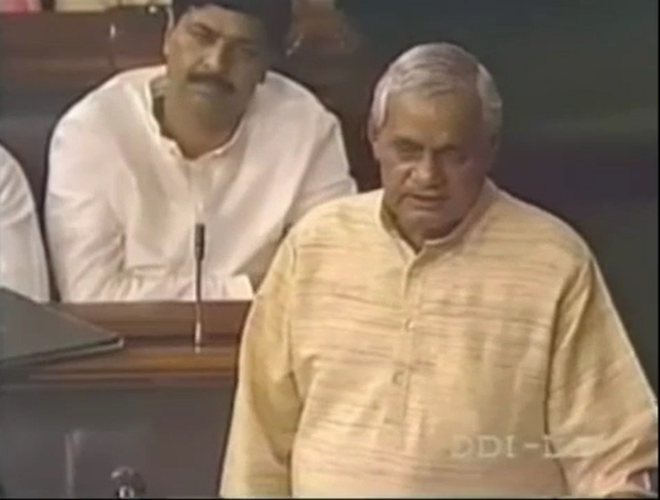
On May 27, Mr. Vajpayee resigned in Parliament, rendering the vote of confidence unnecessary. “I abhor the politics practised today. I have no lust for power and whether I am there or not, this nation’s democracy must survive,” he was quoted as saying by The Hindu. Warning the United Front from being dependent on the Congress for every decision, he announced to a stunned Parliament that he was resigning — bringing the curtains down on the 13-day government.
United Front government formation
As Mr. Vajpayee struggled to form a coalition to save his government, the Third Force led by TDP chief Chandrababu Naidu and backed by AGP, DMK and Akali Dal kicked off the formation a non-Congress, non-BJP United Front government. Parallelly, the Janata Dal and the Left Front were in talks with the Congress (headed by P.V. Narasimha Rao) to form a ‘secular’ government.
The Third Force parties, except the Janata Dal, remained adamant about forming a coalition without the Congress, with SP chief Mulayam Yadav backing CPM’s Jyoti Basu for Prime Minister. As the parties dithered to form a consensus, the Congress Working Committee (CWC) passed a resolution to support the formation of a Government by political parties totally committed to secular democracy. This stirred the Third Force to tap ex-PM V.P. Singh to take up the mantle once again. As Mr. Singh remained absent from New Delhi, the Third Force’s 136 MPs along with Congress’ 180 MPs elected Mr. H.D. Deve Gowda as its Prime Ministerial candidate. The Congress sought to remain an outside supporter of the government.
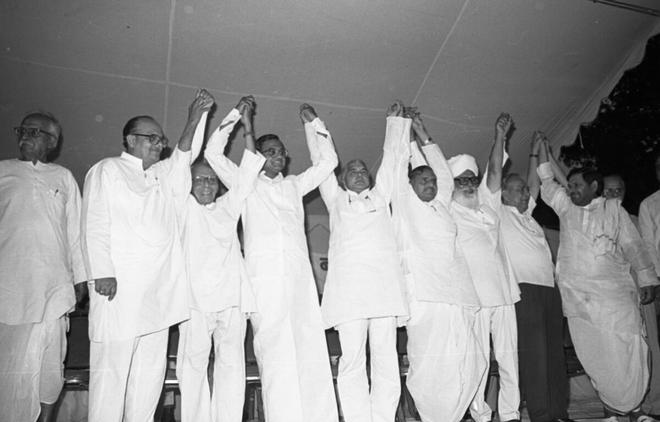
On June 2, 1996, Mr. Gowda was sworn in with 20 ministers from various regional parties. Apart from Mr. Gowda, Janata Dal’s C. M. Ibrahim, Devendra Prasad Yadav, Inder Kumar Gujral, Ram Vilas Paswan and S. R. Bommai, Samajwadi party chief Mulayam Singh Yadav, DMK’s T.G. Venkataraman, TMC’s P Chidambaram and M Arunachalam, TDP’s K Yerran Naidu and Akali Dal’s Balwant Singh Ramoowalia clinched cabinet berths.
Two SP MPs, four Janata Dal MPs, and two TDP MPs were sworn in as Ministers of State. In a first, the cabinet reflected the social bases of the regional parties, without a single Brahmin member. . Moreover, the ‘Hindi belt,’ which was ridiculed by the Janata Dal during the campaign, was largely unrepresented. Ministers belonged mainly from states like Uttar Pradesh, Bihar, Karnataka, Tamil Nadu, Andhra Pradesh and Punjab. No ministers belonged to Maharashtra, Gujarat, Madhya Pradesh, Odisha, West Bengal and Rajasthan.
Deve Gowda’s government – achievements & fall
Focusing on Jammu-Kashmir, Mr. Gowda became the first Prime Minister in nine years to visit the war-ravaged Valley. On July 6, 1996, Mr. Gowda made a one-day trip to Srinagar and restarted the Sate elections, promising ‘maximum autonomy’— the first since the 1987 elections which were mostly believed to be a political understanding between Congress and the National Congress.
The other major achievement of the Gowda government was the creation of the Gujral doctrine, setting a tone for India’s policy towards its neighbours. Under this doctrine — the brainchild of External Affairs Minister Inder Kumar Gujral — India focused on giving more to neighbours (Nepal, Bangladesh, Bhutan, Maldives and Sri Lanka) without reciprocity, and sought to respect non-interference in neighbours internal matters, engage in no military intervention in another country unless asked by it, disallow use of its territory against the interest of another neighbour and settle disputes peacefully and bilaterally. Except Pakistan, all neighbouring countries fell under this doctrine’s ambit.
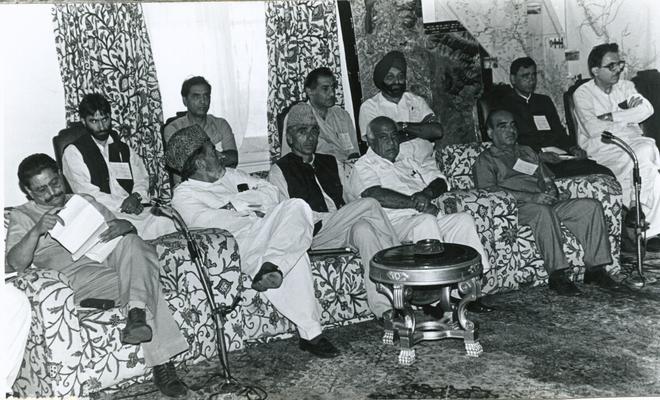
This policy formed the bulwark for India’s neighbourhood first policy (currently in use by Modi) and cemented the nations’ belief in dialogue, avoiding provocations and deaingl with smaller neighbours with a soft touch rather than domination. This led to tremendous success in repairing India’s ties with countries like Bangladesh and Sri Lanka after decades.
However, even these successes could not overcome the rising differences between Mr. Gowda and then-Congress president Sitaram Kesri; Mr. Gowda preferred to deal with Mr. Kesri’s predecessor Mr. Narasimha Rao in matters related to the coalition, seat sharing and even policy issues.
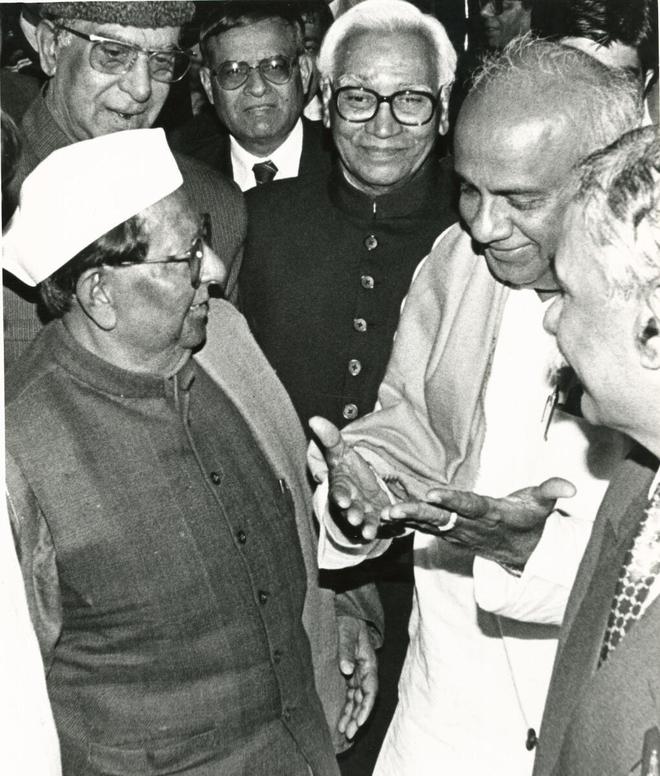
To worsen matters, Mr. Gowda refused to support the Congress in forming a coalition government with the BSP after the Uttar Pradesh Assembly elections resulted in a hung assembly. However, the final straw was in January 1997, when the Central Bureau of Investigation (CBI) kept hounding the Congress chief about accumulating assets disproportionate to his declared income and the PM’s office did nothing.
On March 30, 1997, Congress withdrew support from the UF government and Mr. Kesri staked claim to form a new government. As Mr. Gowda refused to step down, the government was put through a trust vote, which it lost, with both Congress and BJP voting against it. Vowing to settle scores with the Congress, Mr. Gowda stepped down as Prime Minister on April 11, 1997, bringing curtains down on his 10-month government.
United Front government-2
After days of back-room meetings and negotiations between the Janata Dal and Congress, Mr. Inder Kumar Gujral, the former External Affairs Minister in the Gowda government, was chosen as his successor. Mr. Gujral — a soft-spoken career diplomat — got the top post with the support of allies like CPM’s Jyoti Basu, Janata Dal’s Lalu Prasad Yadav and former Vice-President Krishan Kant. On April 21, a mere ten days after Mr. Gowda’s ouster, I.K Gujral was sworn in as the 12th Prime Minister of India. Congress once again chose to support the government from outside.
Controversies & fall of UF-2 government
Trouble began for the newly sworn-in Prime Minister when the CBI started probing then-Bihar Chief Minister and Janata Dal President Lalu Prasad Yadav for embezzling funds from the State’s animal husbandry department— in the Rs 960 crore fodder scam. While several UF members openly demanded Mr. Yadav’s resignation, Mr. Gujral, who was elected to the Rajya Sabha from Bihar, remained silent.
As Mr. Yadav threatened to split the Janata Dal and thereby rescind support to the UF government, Mr. Gujral replaced the CBI director Joginder Singh as a last ditch attempt to keep his party together. However, it failed and on July 5, 1997, Lalu Prasad Yadav split the Janata Dal to form the Rashtriya Janata Dal (RJD), taking with him 18 of the 22 Janata Dal MPs and six Rajya Sabha MPs. The disgraced RJD chief was then arrested and he resigned as Bihar’s CM, installing his wife Rabri Devi to rule in his steed.
Ties with Congress frayed again after Mr. Kesri forced Mr. Gujral’s cabinet to recommend imposition of President’s rule in Uttar Pradesh, removing the BJP-BSP government led by Kalyan Singh. However, after President K.R Narayanan informed the Cabinet that he was not convinced that ‘law and order had broken down in UP,’ the Cabinet reversed its decision after a seven hour debate.
The final nail in the coffin for the Gujral government was the leak of the Jain Commission’s interim report on November 8, 1997, detailing the investigation into late PM Rajiv Gandhi’s assassination.
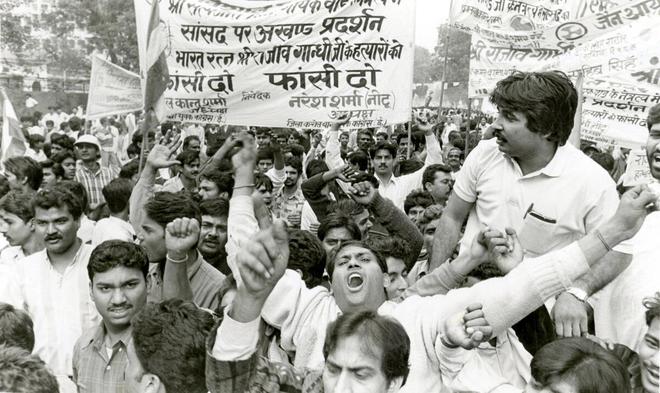
The interim report was tabled on November 20, 1997. It concluded that between 1984 and 1991, Mr. Gandhi faced the highest level of threats from Sikh extremist organisations, seeking revenge for the anti-Sikh riots post-Indira Gandhi’s assassination and from the LTTE, which was infuriated with the Indian peacekeeping force sent to Sri Lanka.
Accusing the two Janata Dal Prime Ministers —V.P Singh and Chandrashekhar —and the then-Tamil Nadu chief Minister M Karunanidhi of not providing adequate security to Mr. Gandhi after he remitted office in 1989, the interim report also stated that both Centre and State had not curbed the growing anti-national activities of the LTTE in Tamil Nadu.
The report created an uproar in Parliament, with Congress demanding the ouster of the DMK from the UF government and the arrest of those indicted in the report. Fearing DMK’s withdrawal of support, Mr. Gujral stated that the government did not agree with its findings and refused to sack DMK ministers Murasoli Maran, T. G. Venkatraman and T. R. Baalu, informing Mr. Kesri of the same in a letter. An infuriated Congress withdrew support to the UF government on November 28, 1997, bringing Mr. Gujral’s seven-month stint as PM to an end.
No majority triggers snap election
After the resignation of Mr. Gujral, Congress staked claim to form a new government, with Mr. Kesri urging all secular parties to support them. However, Congress’ pleas fell on deaf ears. After a meeting with the various UF parties, its convener N. Chandrababu Naidu informed the President that the parties would support neither the Bharatiya Janata Party nor the Congress in their bid for power. Moreover, BJP general secretary M. Venkaiah Naidu warned that his party would “throttle” any move by the Congress to form a government, leading to a stalemate at the Centre. With no option left, President K.R. Narayanan dissolved the Parliament on December 4, 1997 triggering snap elections for the General Assembly.
Effect of United Front governments
The two United front governments gave mixed results for India. While political instability, regional infighting and slow governance were some of the starkest features of the coalition, a better representation of the marginalised sections (Muslims, SC/ST, OBCs, and Dalits) was seen during the two governments. Policies were aimed at the poor and were not tinged with religious fervour. However, a weak and decentralised Delhi did lead to power being held by the outside supporter Congress, rather than by the ruling government.
Political instability & fractured governance
One of the biggest drawbacks of the fourteen party coalition government was the political instability it brought with it. Bereft of any ideological similarities, the constituent parties often fought with each other on policies and decisions were based on political heft rather than consensus.
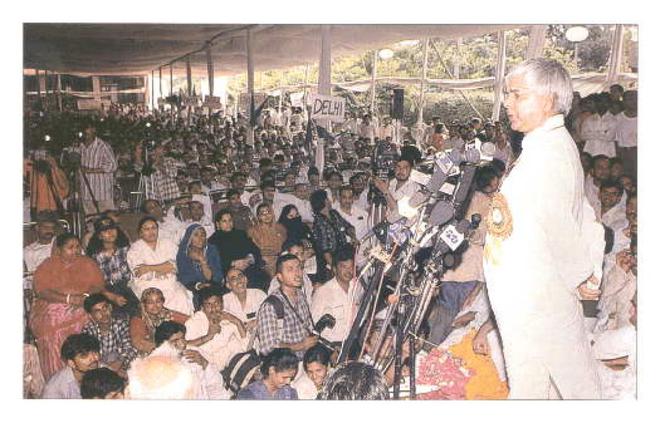
The UF governments, which mainly comprised of southern regional socialist parties, disagreed on the pro-Hindu politics of the ‘cow belt’ (Rajasthan, Madhya Pradesh, Uttar Pradesh and Bihar). While socialist parties like Samajwadi Party, the Rashtriya Janata Dal and the Left Front openly catered more to minorities and the backward class voters, the Congress presented an ambiguous policy in this regard.As seen in its failure to stop a BSP-BJP coalition in UP, Congress, which was an outside supporter, but the biggest party in the coalition, felt left out and marginalised in policy decisions.
Economic reforms
The United Front years followed directly after the 1991 balance of payments economic crisis. Through liberalisation, ex-PM Narasimha Rao had opened up the Indian market, strengthening domestic manufacturers and ushered a new era of privatisation. However, his schemes, which aimed at boosting foreign capital in India, could not the increase India’s industrial and agricultural output — the chief source of livelihood for the majority.
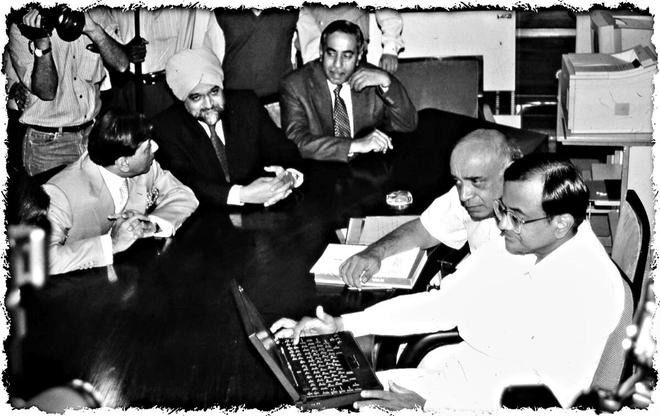
The liberalised markets favoured the business class but also increased the wealth gap between India’s poor and the rich. To address this issue, the Gowda administration unveiled its ‘dream budget’ in February 1997. Then-Finance Minister P. Chidambaram lowered taxes on individuals, domestic companies and slashed custom duties with the estimation that lower tax rates would boost compliance. The second UF government was unable to present a budget as it lost majority before February 1998 – putting a full stop to all economic reforms under this coalition.
Improved diplomacy
The five principles of the Gujral doctrine reduced tensions among India and its neighbours leading to breakthroughs like the 30-year water-sharing treaty with Bangladesh, hydro power project with Nepal on the Mahakali river and continued dialogue with Pakistan.
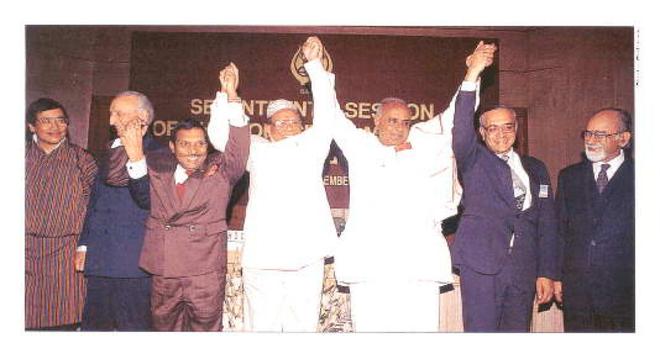
This softer approach also resulted in an increase in trade between India and Pakistan in wheat, sugar and cotton, with official trade touching $1 billion. Border talks between India and China, too, resulted in identification of an interim border and withdrawal of heavy weapons from the eastern border.
Security threats
The previous National Front government under V.P. Singh saw some of India’s biggest intelligence failures, including the 1989 abduction of 23-year-old Rubaiya Sayeed, daughter of then-Home Minister Mufti Mohammed Sayeed, by Kashmiri militants and the 1991 assassination of then-PM Rajiv Gandhi by LTTE terrorists.
In stark contrast, during his tenure, Mr. Gowda made Kashmir and the North-East a priority. Not only did he visit the Valley and restart fair elections, he also held talks with Naga militant group National Socialist Council of Nagaland – Isak-Muivah (NSCN-IM) leaders to sign a ceasefire agreement. As of date, the same peace negotiations are still on between the insurgent group and the Centre.
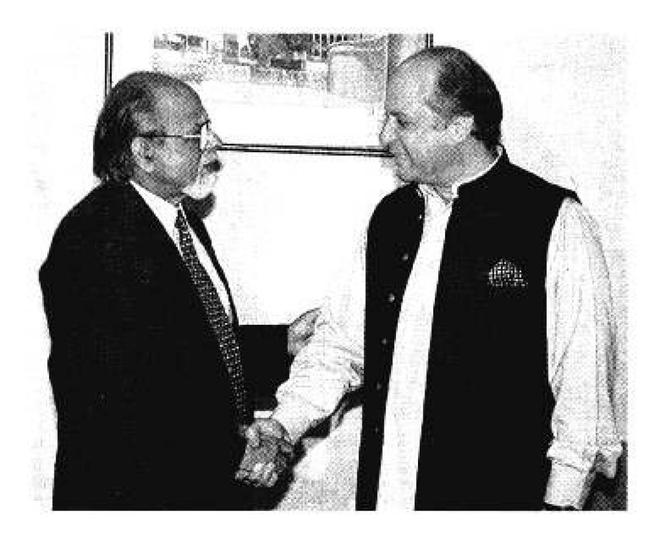
Similarly, his successor and former External Affairs Minister I.K. Gujral, engaged in fostering better relations with India’s neighbours. Identifying Kashmir as the ‘core issue’ between India and Pakistan, the two nations’ Prime ministers I.K. Gujral and Mr. Nawaz Sharif held two rounds of talks following the 1997 SAARC summit in Male.
(Inputs from The Hindu archives)





!["[T]he First and Fifth Amendments Require ICE to Provide Information About the Whereabouts of a Detained Person"](https://images.inkl.com/s3/publisher/cover/212/reason-cover.png?w=600)

